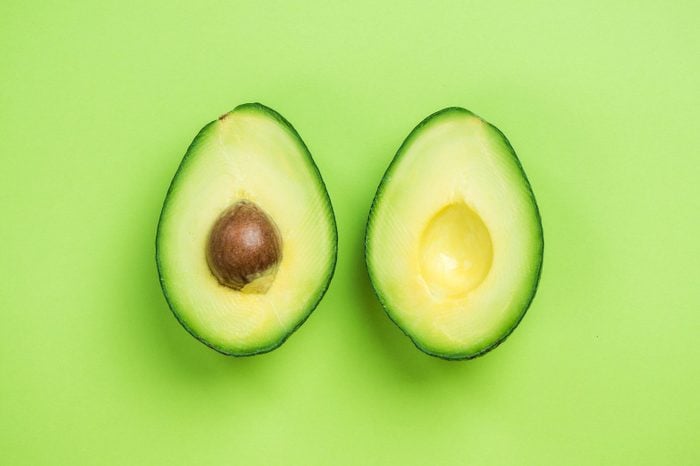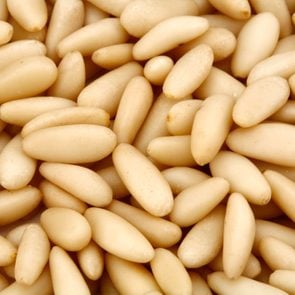Is Avocado a Fruit or a Vegetable?
Updated: Mar. 15, 2024

They're versatile, healthy, and the tastiest part of any plant-based meal. But is avocado a fruit or a vegetable? We have the answer to that pressing question!
Sure, it’s clear that the best way to eat avocado is on toast, with a poached egg and everything seasoning. Or mashed with tomatoes and jalapeños and scooped up with tortilla chips. Or cut into avocado fries. Those are what you call food facts! But beyond the delicious ways to eat it, most people know surprisingly little about the beloved, on-trend avocado, even though Americans consumed a whopping three billion pounds of them in 2021. One basic question that you might not know: Is avocado a fruit or vegetable?
We’ve investigated other salad ingredients to answer pressing questions such as whether corn, tomatoes and cucumbers are fruits or vegetables. We’ve even looked into the eggplant question to determine if eggplant is a fruit. But until now, we’ve been too busy eating avocados to figure out whether they belong in the fruit bowl or the vegetable crisper. It’s time to figure out once and for all if avocados are fruits or vegetables.
What’s the difference between fruits and vegetables?
Before we answer the question “Is avocado a fruit or vegetable?” it’s important to understand the difference between fruits and vegetables. The first thing you need to know is that there are two forms of classifications: botanical and culinary. But here’s a crazy twist: A single plant product can be a fruit in one category and a veggie in the other!
To be classified as a botanical fruit, the item in question must contain a seed and develop from the flower of a plant. That’s why plums, apples, and grapes are all fruits. However, any other edible part of a plant—like the leaves, stems, and roots—are vegetables. Think spinach (leaves), celery (stems), and carrots (roots). Seems pretty clear, right? Well, when it comes to classifying fruits and vegetables in cooking, it’s all about taste. Fruits are considered to have a sweet or tart flavor, and they make great sauces or desserts. Vegetables have a savory taste and appear either in side dishes or as the star of a main course.
Of course, there are exceptions. For example, bell peppers are technically fruits (because they contain seeds and grow from flowers), and some might taste pretty sweet when eaten raw. But in terms of cuisine, they’re considered vegetables, whether stuffed with rice and beef or as the perfect crunchy addition to a salad or stir-fry. That said, no matter which one you’re cooking with, here’s how to keep fruits and vegetables fresh longer.
Is avocado a fruit or vegetable?
OK, now back to the question at hand. Avocados develop from a flower, so from a botanical perspective, they are considered fruits. The small greenish flowers grow on trees in their native Mexico and other warm climates. However, despite fitting all the requirements for a fruit, avocados are more often treated as vegetables in terms of how we eat them. The USDA agrees, classifying avocado as a vegetable due to its nutritional content and culinary use.
With its rich, nutty flavor, an avocado isn’t as sweet as other fruits, but its flexibility in all sorts of dishes makes it a pretty unusual vegetable too. After all, even though it’s a fruit, you wouldn’t put it in a fruit salad alongside melons and oranges. And even thought it’s a vegetable, it’s not a snack like a carrot stick, and it’s delicious on toast at brunch. No wonder we find it hard to classify avocados into just one category.
So there you have it: An avocado is a fruit and a vegetable! And did you know that another name for the avocado is the alligator pear? That’s because of its shape and its thick, coarse skin. If your avocado is looking greener than you’d like, here’s how to ripen an avocado quickly.
What fruit family is avocado in?
OK, now you know that avocado is a fruit, but this secondary classification might shock you: It’s technically considered a berry. Yes, a berry! To fit into the berry category, a fleshy fruit has to form from an individual flower and contain at least one seed, although most berries (like grapes) contain more than one. The pit at the center of your avocado is actually the seed. If you’re in the right climate, you can (eventually) grow that seed into an avocado tree of your very own. Though, sorry, apartment dwellers—avocados don’t make the list of good indoor fruit trees.
All avocados have these berry-like features, although varieties of avocado range from the size of chicken eggs to four-pound behemoths! Some are even green when they’re ripe, but others are a dark purple. In the United States, we mostly see the Hass avocado in stores, which is a tasty hybrid of Mexican and Guatemalan avocados. It’s not a coincidence that they’re both countries where you can get some seriously good guacamole too. While we’re on the topic, here’s how to keep guacamole from turning brown.
Are avocados healthy?
Here is the real answer if you’ve ever wondered whether avocados are good for you. You might have heard that avocados are a superfood, and even though we now know they’re technically a superfruit and a supervegetable too, it’s definitely true. Avocados are high in monounsaturated fat (that’s the good type of fat), which can help lower cholesterol levels, and they have a ton of fiber. They also provide you with nearly 20 vitamins and minerals, including potassium, folate, B6, and vitamins C and E.
Avocados are great to add to any meal and will help support your eyes, heart, digestion, and healthy blood pressure. Eating avocados is also great when you’re pregnant—one avocado gives you about 41 percent of the daily folate you need to help grow a healthy baby. All in all, you can’t go wrong adding this berry to your plate. Next, let us surprise you with the news that peanuts aren’t actually nuts.
Sources:
- GlobeNewswire: “U.S. on track to consume more avocados in 2020 than ever before”
- Healthline.com: “What’s the difference between fruits and vegetables?”
- Britannica.com: “Bell pepper”
- Britannica.com: “Avocado”
- USDA.gov: “What foods are in the vegetable group?”
- WebMD: “Avocado”



